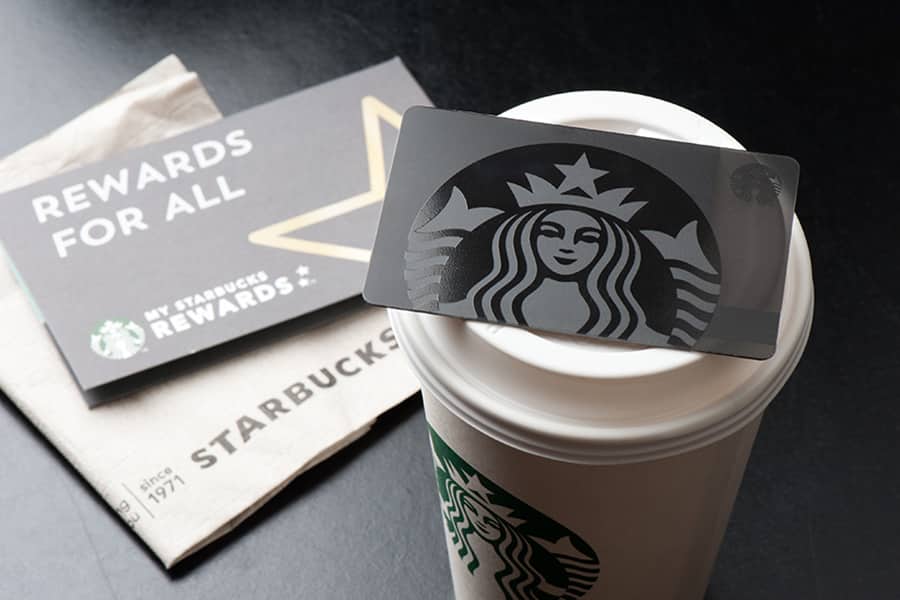I was pissed off before I even read the email because I knew what it was going to tell me before my eyeballs scrolled across the first sentence.
The headline of the email read, “A Note on Updates to Starbucks Rewards.”
The email went on to explain why, on February 13, Starbucks was doubling the number of stars I must accumulate to get a freebie. This after doubling the number of stars less than a couple of years ago. I didn’t get a gold Starbucks card and join the rewards program for no reason. I go once a week, sometimes twice. If I’m traveling it might be every morning, because it’s excruciatingly difficult to find a good cup of tea…. anywhere.
It used to be for every 25 Stars you accumulated, you got a freebie. The number of stars is based on dollars spent. Then a couple of years ago, the company doubled it to 50. Now, it’s 100 stars to get a free cup of tea. Now for the Starbucks aficionados who regularly purchase the Reserve Hazelnut Bianco Latte with an Espresso Shot and whipped cream (which isn’t really coffee, BTW) that costs like a million dollars, sure, they can get to 100 points in a week or two.
But for me, who gets a Vente Royal Breakfast tea, no room, black, no fru fru, it’s going to take me twice as long to accumulate points. So, I won’t get as many freebies as I used to. They didn’t even give me my free Birthday drink this year.
No, this isn’t a rant about Starbucks, per se. It’s about companies who use Rewards Programs for their customers. What is the purpose of the Rewards Program? Is it significant enough to motivate customers to enroll in it? Are the Rewards worthwhile? What does conducting a rewards program do for the establishment and continuation of your brand? What happens when you make stupid alterations to your Rewards program that ticks off your loyal customers?
In a blog post on Annex Cloud’s website, it discusses “The 10 Most Important Pros and Cons of Loyalty Programs.” Annex Cloud is a company that specializes in building loyalty platforms for companies like The North Face, Vans, Herrods, and Harley-Davidson.
The number one advantage cited for establishing a rewards program is Customer Retention, essentially rewarding your customers for continuing to make purchases of your product or service.
In Annex Cloud’s own research into this, they determined a couple of key data points:
- Rewards programs increase overall revenue between 5-10%;
- Loyalty members spend 5-20% more money than non-members;
- Loyalty members also buy 5-20% more frequently than non-members.
A couple of other bullet points about some positives regarding loyalty programs include acquiring actionable customer data and buying trends, gaining the ability to cross-sell and up-sell members based on that data, and creating better communications with customers.
Let’s keep my personal scenario in mind as we examine the number one negative aspect of loyalty programs outlined in the article.
It stated that it is difficult to gauge loyal behavior because loyalty is an emotion that may not be able to be measured by a loyalty program. A human engaged in a loyalty program may be doing so strictly from a transactional perspective with little actual loyalty to the particular company or brand.
Other negative nuggets include market saturation (everybody has a rewards program), the buying patterns of humans change, and so does their loyalty, and the data collected provides a narrow view of that consumer because it’s only focused on one product or one company and does not consider all the other purchasing decisions made daily and weekly.
I originally obtained a gold Starbucks card for the purpose of enrolling in the rewards program. I was convinced by a young whippersnapper that it was the best way for both parties to keep track of my rewards. This was about 20 years ago.
However, none of Starbucks’ data on me will tell them that I’m honked off about the changes in the Rewards program. I will not go more frequently than I currently do, nor will I spend any more money than I usually do. Starbucks has me over a barrel in that I’m a tea snob. I love a good cup of tea. You can’t get that from any other big box store. If you go to Dunkin Donuts and ask for tea, they’ll hand you a Styrofoam cup with hot water in it and a Lipton tea bag. I might as well just drink water. The same is the case for almost any chain bakery or breakfast spot, as well as almost all convenience stores.
But my loyalty is transactional, and yes, also because of the quality of the product. I also love to go to my local Starbucks, and you can read why in a previous post (What’s in a Name?). But I no longer care very much about my gold Starbucks card or about the rewards I’ll receive – eventually.
If you’re a small business that’s considering embarking upon a loyalty program, or you already have one in place, these are the relevant items to consider: make sure the reward is commensurate with the buyer’s measured purchase frequency and purchase amount; make sure the reward is tangible and meaningful; and, finally, give your rewards program lots of thought before you implement it so that you don’t have to move the goalposts once it’s in place.
If you need a Wizard or two to help you with your marketing, including implementing a loyalty program, let me know. I can put together the best team for the job.
- He Didn’t Have to Do It - December 22, 2025
- We Got a Freebie - December 2, 2025
- Do You Keep Your Promises? - November 20, 2025

